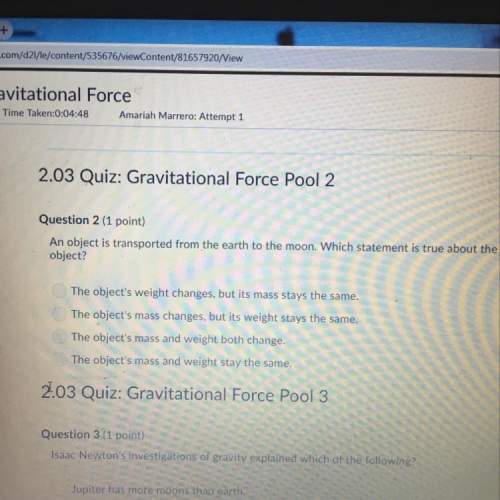
Chemistry, 03.09.2019 00:20 mahogany1956
Ammonia (nh3) reacts with oxygen to form nitric oxide (no) and water vapor: 4nh3 + 502 4no + 6h2o b) when 20.0 g nh3 and 50.0 g o2 are allowed to react, which is the limiting reagent? which reactant is left over and how much left over at the end of reaction? ans: 2.94 g c) what is the theoretical yield of no if 20.0 g nh3 and 50.0 g o2 are allowed to react? ans: 35.29 g d) what is the theoretical yield of h20 if 20.0 g nh3 and 50.0 g o2 are allowed to react? ans: 31.74 g

Answers: 1


Another question on Chemistry


Chemistry, 22.06.2019 14:30
What is the relationship between wind and ocean waves? question 17 options: wind moving at higher speeds will transfer more energy to the water, resulting in stronger waves. wind moving at higher speeds will transfer energy over a larger part of the ocean water, resulting in waves with a shorter wavelength. winds moving at higher speeds with cause water to move forward at faster rates, causing larger ocean waves. winds moving at higher speeds will affect deeper water, resulting in waves that move at a faster rate. how do temperature and salinity affect deepwater currents? question 15 options: as temperatures and salinity levels of water increase, the water rises to the surface where it creates currents as it moves to colder regions. they create changes in wind direction, moving denser water in the same direction as the wind and causing the deepwater circulation patterns found in the ocean. they equalize the forces on undersea currents caused by the coriolis effect as they replace more dense water with less dense water. they create density differences that cause dense deepwater currents to flow toward the equator where they displace less dense, warmer water above them.
Answers: 2

Chemistry, 22.06.2019 16:00
The chemical equation below shows the reaction of sodium (na) and chlorine (cl) to form sodium chloride (nacl). 2na + cl2 → 2nacl in this equation, which of the following is a reactant? i. sodium ii. chlorine iii. sodium chloride
Answers: 1

You know the right answer?
Ammonia (nh3) reacts with oxygen to form nitric oxide (no) and water vapor: 4nh3 + 502 4no + 6h2o b...
Questions

English, 17.11.2020 22:40


Computers and Technology, 17.11.2020 22:40

Mathematics, 17.11.2020 22:40

Mathematics, 17.11.2020 22:40


English, 17.11.2020 22:40

Business, 17.11.2020 22:40

Mathematics, 17.11.2020 22:40



History, 17.11.2020 22:40


Geography, 17.11.2020 22:40

Mathematics, 17.11.2020 22:40



English, 17.11.2020 22:40

Mathematics, 17.11.2020 22:40

 is 35.29 g.
is 35.29 g. is 31.74 g.
is 31.74 g.





 of oxygen
of oxygen of
of 
 of
of 



